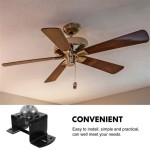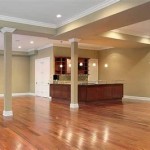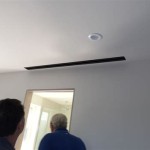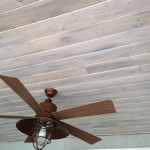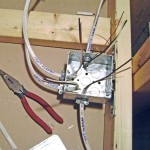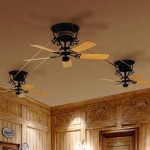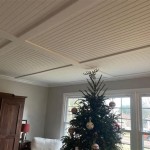Types of Ceiling Finishes: A Comprehensive Guide with Visual Examples
Ceiling finishes play a significant role in the overall aesthetic and functional design of a space. The choice of finish impacts not only the room's visual appeal but also its acoustics, lighting, and even its perceived size. Selecting the appropriate ceiling finish requires careful consideration of various factors, including budget, style preferences, room function, and desired level of maintenance. This article explores a range of ceiling finish options, providing a detailed overview of their characteristics, advantages, and disadvantages, supplemented where possible with descriptive examples.
Understanding the Purpose of Ceiling Finishes
Before delving into specific types of ceiling finishes, it's essential to understand the functions they serve. Beyond pure aesthetics, ceiling finishes contribute to the following:
*Acoustics:
Certain materials absorb sound, reducing echo and reverberation, making the space more comfortable, especially important in home theaters, offices, or large living areas. *Lighting:
The texture and color of the ceiling influence light reflection. A light-colored, smooth surface will reflect more light, brightening the room, while a darker, textured surface will absorb more light, creating a more subdued atmosphere. *Concealment:
Finishes can hide imperfections in the structural ceiling, such as pipes, wiring, or ductwork. *Insulation:
Some materials offer insulating properties, helping to regulate temperature and reduce energy costs. *Fire Resistance:
Certain ceiling finishes are specifically designed to provide fire resistance, enhancing building safety. *Moisture Resistance:
In bathrooms and kitchens, moisture-resistant finishes are crucial to prevent damage and mold growth.Common Types of Ceiling Finishes
The following section outlines some widely used ceiling finish options, detailing their characteristics, benefits, and drawbacks.
Drywall
Drywall, also known as gypsum board, is the most common ceiling finish in residential construction. Its popularity stems from its affordability, ease of installation, and versatility. Drywall ceilings can be finished in a variety of textures, allowing for diverse aesthetic effects. The seams between drywall sheets are typically taped and mudded to create a smooth, seamless surface. After that, drywall ceilings can be primed and painted with virtually any color or finish. Common textures include smooth, orange peel, knockdown, and popcorn (though popcorn is less popular now due to concerns about asbestos in older installations).
Advantages:
* Affordable and readily available. * Versatile and can be finished with a variety of textures and paints. * Relatively easy to install. * Provides a smooth, uniform surface.Disadvantages:
* Can be susceptible to water damage if not properly sealed. * Requires taping and mudding to conceal seams. * Can be prone to cracking over time, especially in areas with seismic activity. * Difficult to repair large areas.Plaster
Plaster is a traditional ceiling finish composed of a mixture of lime, sand, and water, often reinforced with fibers. It is applied in multiple layers to a lath framework, creating a smooth, durable surface. Plaster ceilings are known for their longevity and resistance to fire. While less common in modern construction due to the labor-intensive installation process, plaster remains a popular choice for historical restoration projects and high-end homes.
Advantages:
* Extremely durable and long-lasting. * Fire-resistant. * Provides excellent acoustic properties. * Offers a smooth, seamless finish.Disadvantages:
* More expensive than drywall. * Requires skilled labor for installation. * Can be prone to cracking if not properly installed or maintained. * More challenging to repair than drywall.Suspended Ceilings (Drop Ceilings)
Suspended ceilings, also known as drop ceilings, consist of a grid of metal channels suspended from the structural ceiling. Acoustic ceiling tiles are then placed within the grid, creating a finished ceiling surface. Suspended ceilings are commonly used in commercial buildings, offices, and basements. They offer easy access to pipes, wiring, and ductwork located above the ceiling. The tiles themselves are available in a variety of materials, including mineral fiber, fiberglass, and metal, each offering different acoustic and aesthetic properties.
Advantages:
* Easy access to pipes, wiring, and ductwork. * Improved acoustics. * Relatively easy to install. * Can conceal imperfections in the structural ceiling.Disadvantages:
* Can lower the ceiling height. * May not be aesthetically pleasing in all settings. * Tiles can be susceptible to water damage or sagging. * Can give a commercial or institutional appearance.Wood Ceilings
Wood ceilings offer a warm, natural aesthetic. They can be constructed from solid wood planks, tongue-and-groove boards, or wood panels. Wood ceilings are available in a wide variety of wood species, stains, and finishes, allowing for customization to match any décor. They are a popular choice for living rooms, dining rooms, and bedrooms, adding a touch of rustic charm or contemporary elegance.
Advantages:
* Adds warmth and character to a room. * Can be customized with a variety of wood species, stains, and finishes. * Provides good acoustic properties. * Can increase the value of a home.Disadvantages:
* Can be expensive. * Requires careful installation to prevent warping or cracking. * May require regular maintenance, such as staining or sealing. * Can be susceptible to moisture damage.Metal Ceilings
Metal ceilings are becoming increasingly popular in both residential and commercial settings. They are available in a variety of materials, including tin, aluminum, and steel. Metal ceilings offer a sleek, modern aesthetic and are known for their durability and resistance to fire. They can be installed as panels, tiles, or sheets, and are often embossed with decorative patterns. Metal ceilings are a good choice for kitchens, bathrooms, and basements, as they are resistant to moisture and easy to clean.
Advantages:
* Durable and long-lasting. * Fire-resistant. * Moisture-resistant and easy to clean. * Offers a sleek, modern aesthetic.Disadvantages:
* Can be expensive. * May require professional installation. * Can be noisy if not properly insulated. * Some metal finishes can show fingerprints and smudges.Exposed Ceilings
Exposed ceilings leave the structural elements of the ceiling visible, such as beams, joists, and ductwork. This style is often found in industrial lofts, modern homes, and converted warehouses. Exposed ceilings can create a raw, edgy aesthetic and can be a cost-effective option if the structural elements are already in good condition. Painting the exposed elements in a uniform color can create a more cohesive look. However, exposed ceilings can also be noisy and may require insulation to improve acoustics.
Advantages:
* Creates a unique, industrial aesthetic. * Can be a cost-effective option. * Maximizes ceiling height. * Highlights architectural details.Disadvantages:
* Can be noisy. * May require insulation for acoustic and thermal comfort. * Can look unfinished if not properly executed. * Requires careful planning to ensure a cohesive look.Fabric Ceilings
Fabric ceilings involve stretching fabric across a frame to create a smooth, seamless ceiling surface. This option is gaining popularity for its acoustic benefits and its ability to create unique visual effects. Fabric ceilings can be customized with various colors, patterns, and textures. They are often used in home theaters, recording studios, and other spaces where sound absorption is important.
Advantages:
* Excellent acoustic properties. * Can be customized with various colors, patterns, and textures. * Provides a smooth, seamless finish. * Can conceal imperfections in the structural ceiling.Disadvantages:
* Can be expensive. * Requires professional installation. * Can be difficult to clean. * May be susceptible to staining.Tile Ceilings
Tile ceilings, utilizing materials like ceramic, porcelain, or even decorative ceiling tiles, introduce a distinct visual element and durable surface. Often found in kitchens and bathrooms, these tiles resist moisture and simplify cleaning. Installation can range from simple, drop-in applications to more intricate, grouted installations. The visual impact of tile ceilings can vary greatly, from a clean, minimalist look to a bold, patterned statement, depending on the tile's design and layout.
Advantages:
* Moisture-resistant and easy to clean, ideal for kitchens and bathrooms. * Durable surface that can withstand wear and tear. * Wide range of styles, colors, and patterns available. * Can add a unique decorative element to the room.Disadvantages:
* Can be costly, especially for intricate tile designs. * Installation can be labor-intensive and may require professional help. * Grout lines can require periodic cleaning and maintenance. * May not be suitable for all room styles or aesthetic preferences.Factors to Consider When Choosing a Ceiling Finish
The selection of a ceiling finish requires careful consideration of several factors to ensure a successful and satisfying outcome.
*Budget:
Determine the budget allocation for the ceiling finish, as different materials and installation methods vary significantly in cost. *Style:
Consider the overall style of the room and choose a ceiling finish that complements the décor. *Room Function:
Select a finish that is appropriate for the function of the room. For example, moisture-resistant finishes are essential in bathrooms and kitchens, while acoustic finishes are beneficial in home theaters and offices. *Maintenance:
Evaluate the maintenance requirements of different finishes and choose one that aligns with the desired level of upkeep. *Acoustics:
Assess the acoustic needs of the space and select a finish that provides the desired level of sound absorption. *Lighting:
Consider how the ceiling finish will affect light reflection and choose a finish that enhances the desired lighting scheme.By carefully considering these factors, homeowners and designers can choose the ceiling finish that best meets their needs and preferences, creating a space that is both aesthetically pleasing and functionally sound.

What Are The Diffe Types Of Ceiling Finishes

Ceiling Finishes

The Diffe Types Of Ceiling Textures You Need To Know About Surepro Painting

From Smooth To Textured 7 Styles Of Ceiling Texture Types Finishes

What Are The Diffe Types Of Ceiling Finishes

Blueboard And Plaster Vs Drywall Types Of Mix Boston Plastering

Top 6 Types Of False Ceiling Materials For Stunning Interior Designs Nerolac

Top 6 Types Of False Ceiling Materials For Stunning Interior Designs Nerolac

Types Of Interior Plastering Finishes And How To Identify Them

21 Unique Ceiling Texture Types To Elevate Your Interiors Cozycottagecute
Related Posts

